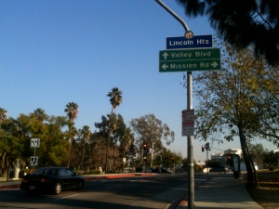
Lincoln Heights lies just inside the boundaries of the city of Los Angeles, in its northeast corner. A short ten minute drive takes you into the heart of the skyscrapers downtown, and the skyscrapers are visible as you walk around the neighborhood streets. The “Heights” in “Lincoln Heights” comes from the hills that create a natural barrier around the neighborhood on its north and east sides. The Los Angeles River, which these days looks more like a dried up canal, lies on the western edge of the neighborhood, separating Lincoln Heights from Chinatown and the rest of downtown LA. The neighborhood was originally started in the mid-1800s by white settlers who traveled west during and after the Mexican-American war. John Griffin, a Virginia surgeon, and his family were originally given the land by the city in return for treating a smallpox epidemic.He would later plan out most of the neighborhood’s development in the 1870s. To this day, many of the Victorian homes built in the 1870’s and 80’s still stand. During the Civil war, it was widely believed that Griffin’s family, the main residents of Lincoln Heights, were confederate sympathizers, because they were Virginians and also were related to Confederate general and California resident Albert Sydney Johnston. Many southern California residents actually sympathized with the south, and tried to secede at various points. This secession coalition was a mix of southern whites who had migrated west and Mexican-Americans upset that their land claims and property rights were not being respected by the US government. Ironically, the neighborhood eventually came to named “Lincoln” Heights, which some believe (though I could not verify) was to repudiate the confederate legacy.
Throughout the 1900’s the neighborhood changed from era to era. What started as a mostly WASP suburb turned into a working-class neighborhood with mostly Italian and Eastern European immigrants in the first half of the century. After World War II, the region’s demographics started shifting again as post-war housing subsidies increased and redlining became standard practice. Many Italian-Americans moved out into the suburbs as property values declined, and many Mexican-Americans, blocked by discrimination from settling in the suburbs, moved to Lincoln Heights. This process was accelerated when Interstate 5 was built through the neighborhood.It cut the neighborhood in half. Around this time, Lincoln Heights started to develop a regional identity as a part of the broader “Eastside” of LA, which has been mostly working class Mexican-American for the last 70 years or so.
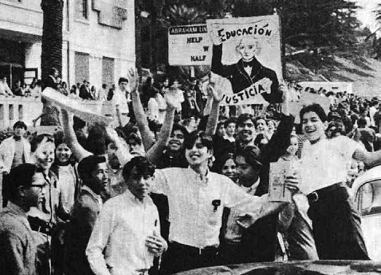
Throughout the 1950’s and 1960’s, activists in the Eastside region advocated for equal access to resources and equal treatment under the law. One famous example occurred in 1968, when a group of students at Lincoln High school joined Latino students in the broader East LA region in a walkout to protest the unequal treatment of Latino students in the school system. At the time, it was commonplace for Latino students in high school to be diagnosed with dubious learning disabilities, and encouraged into vocational training rather than to college. But while the activist movements made progress, they were never completely successful in extending the resources of the city to the Eastside. Of all the neighborhoods in the Eastside region, the second half of the 1900’s has seen Lincoln Heights become the poorest, with the highest crime rate, and with the least developed activist community to advocate for access to resources.*
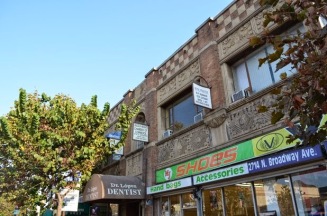
Today Lincoln Heights is about 75% Latino, and about 24% Asian. Many of the Asians have moved east from Chinatown. Only about 5.5% of the population over 25 have college degrees, and only 31% have high school degrees. Broadway, the main commercial street that runs through Lincoln Heights, is filled with restaurants serving tacos, burritos, and mangoneada. Entrepreneurs have set up small-time accounting services, video stores, and pet shops. Broadway is also filled with dollar stores, payday lending outlets and fast-food outlets. About half of the residents of the neighborhood are immigrants born outside of the United States. There is a undeniable cohesion in the community. People love their community, even if they often don’t know where to start in order to make it better.
About nine years ago a group of individuals decided they wanted to move into Lincoln Heights and start a new church for residents of the neighborhood. They were drawn to the neighborhood with a hope that it there was something deeper and richer about the community that was not captured by the statistics and labels. They had a vision that a church planted here would minister to folks from the community who were on the margins of society. So they moved into the neighborhood, and started to get to know their neighbors. For the next couple of years, growth was slow, but as time went on, they started becoming connected to their neighbors. One of the first ways this happened was when a game of catch turned into an impromptu game of touch football in the alleyway by the apartment complex where the church planters lived. Up until this point, the alleyway had been gang territory, but the football games made the alley such a positive space for the community that the gangs relinquished it. Those informal relationships led to the first church attenders.
When people in Lincoln talked about what they wanted to see changed in their community, they often talked about the high school. “Could you find something positive to do with our high school boys?” was a frequent refrain. Boys were losing hope, and failing to find positive outlets to channel their energy. Academic performance was low across the board, but especially for boys. Few graduating seniors went on to four-year colleges. Some entered community college but never graduated. Many more dropped out and got low paying jobs. Gangs were the places boys could find community and purpose, even if it was twisted. That craving for purpose, community, and success that resides deep within all of us. For many of these boys, sports was their one incredibly positive outlet. They provided many important life skills: a chance to learn discipline, a chance to see hard work pay off, a chance to develop positive community and teamwork, a chance to be mentored by older people. And for kids who grow up in contexts where they don’t have other places to learn these skills, sports teams can step into that void. So several folks in the church started finding ways to support the Lincoln high school’s sports programs. Soon, leaders in the church were coaching the football, basketball, volleyball and track teams.
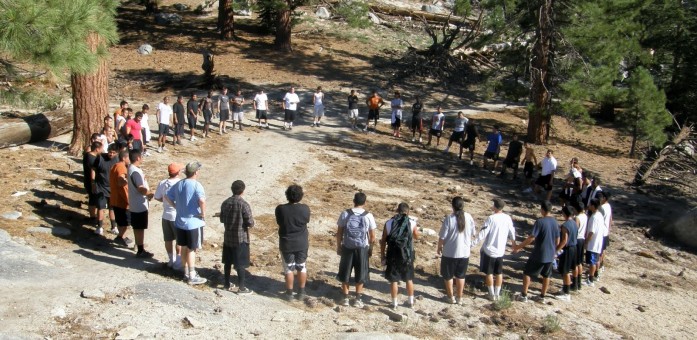
This ministry eventually led the church to start a nonprofit called “In the City,” designed to provide academic support for the high schoolers involved in the sports program. One program was called “Mission 3.0.” The nonprofit tutored numerous high school students to help them raise their GPAs above and beyond a “3.0” in the hope that this would create opportunities for them to go to college or open new vocational paths. Over the past 7 years, numerous boys have come through the program, and the support from “In the City” has changed their lives.
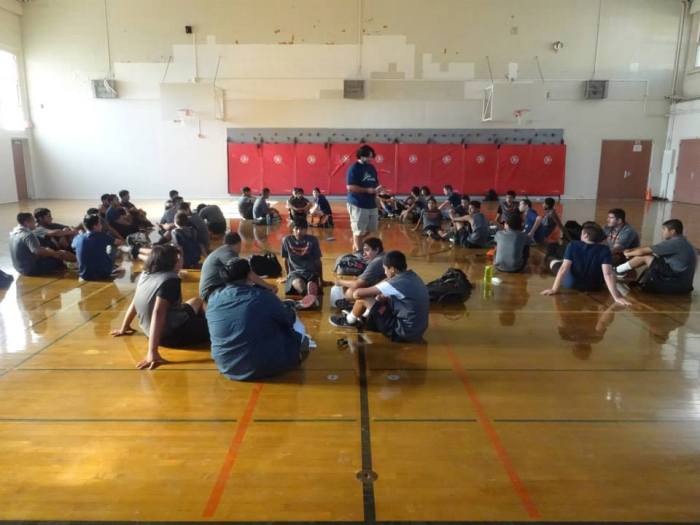
This work with the youth was started to meet a need in the community. But through this ministry, relationships were formed that would later lead many people to come to church, and come into the faith. Many key relationships were formed with players and their friends. As a result, our church is filled with many folks who are under the age of 25. But the church managed to connect not just with the players, but with the parents and coaches who were involved in the program. Many of these folks had been doing the hard and good work of investing in these kids long before our church started. When they saw what the church was doing, they became intrigued. Many of these folks then came to faith, and became key leaders in our church. They were folks who had respect within the community, and who were able to then turn around and reach out to the rest of the community.
Today, New Life averages between 60 and 80 people every Sunday. The church has had many ups and downs, even in the last year since I have been here. But through it all, one of our church’s defining characteristics is the belief in the importance of “doing church with,” not “doing church for.” What we have found is that our efforts at reaching out the the community only go as far as we are able to get folks from the community on board. It is very easy for churches planted in inner-city neighborhoods by folks from outside to end up filled with folks from outside of the neighborhood who all have an earnest desire to involve their inner-city neighbors in their church. They often fail to recognize that churches end up reflecting the values and the perspectives of their leaders. The inner-city neighbors quickly recognize the difference and stay away.

We, as a society, are increasingly seeing ourselves as “sorted” into communities or “tribes” (as I like to call them) that are separated along racially, culturally, and politically distinct lines. Each tribe, while it may not realize it, affirms certain values and practices as good, while demonizing other values and practices as bad. One could say that every tribe or culture is by nature legalistic. Of these lines, racial divides are often the hardest for communities to overcome. The church is not immune from this kind of “tribalism,” in fact, in some ways it could be worse. This was the obstacle that our church had to try to overcome.
The only antidote to this is be very intentional to ensure that the church decision-making leadership teams have a similar demographic to the neighborhood (instead of just being made up of those who have relocated, who are generally white or Asian and college-educated). This has meant through the years intentionally spending time and making an effort to cultivate leaders in our church who come from the Latino community, who can reach the community as “insiders.” It has also meant that the church can only invite in a few non-Latino outsiders. Those that do come will not always get to do the ministry they most desire to do. The first focus has to be creating opportunities for people from the Latino community. The hope is that long-term, this will create a multi-ethnic leadership team that crosses economic classes. This balance is very hard to achieve, but we believe that it is a part of the heart of God seldom seen in the real world.

Our little church certainly has not done this perfectly; we have and will make many mistakes. As our pastor talks about, at various points, every “tribe” in our church has failed to affirm the other “tribes” it finds itself alongside. But by striving towards unity, and by being honest when we fall short, the hope is that the community might become better than it would be had we given up in the first place.
Check in again soon for more of my personal role in Lincoln Heights!
*For any history buffs out, here are one, two, and three links that can get you more information
I see you! You’re about three rows under the guy in the sleeveless white shirt at tge top. You have your hand on your chin.
LikeLike
That is Correct!!!
LikeLike
Very interesting. Thank for sharing.
LikeLike